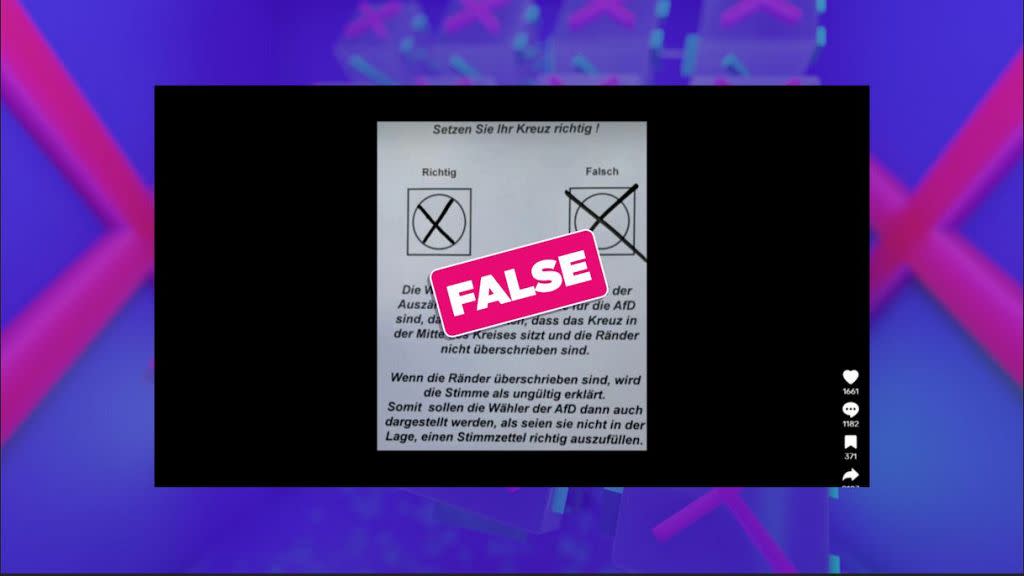No, an oversized cross won’t void your ballot in Germany

Pictures posted on TikTok are instructing German voters on how to mark their ballots when casting their votes in the EU elections.
The posts warn that a cross that fits neatly inside the circle is correct and will be counted, while a cross that extends beyond its edges is wrong and will be disqualified.
The claim is that this is a plot against Germany’s far-right AfD party.
According to the posts, electoral officers have been instructed to ensure that any votes in favour of AfD alone fit within the circle and don’t exceed the margins; otherwise, they’ll be considered void.
However, the claims are baseless.
The text of Germany’s MEP elections law, which covers how citizens vote in the European elections, says that voters can mark their ballots by putting a cross in the circle or “by some other way”.
This could be a dot or a tick, according to the Federal Returning Officer, whose rules also outline some of the ways a vote will be discounted.
These include not clearly indicating who you’re voting for, using ambiguous symbols such as smiley faces, or writing extra words – including write-in candidates – on the ballot paper.
There’s no mention that a cross that goes outside the circle will invalidate the vote. In fact, it’s the opposite: the Federal Returning Officer says that marking outside the circle doesn’t necessarily void a vote, as long as it’s clear who’s being voted for.
Elsewhere on social media, certain posts on X say that postal votes are at risk of manipulation.
Some claim that ballot papers with holes punched into them or with the corners cut off are invalid, but this is wrong.
In the section related to postal voting, Germany’s Federal Election Code explicitly states that postal votes have holes in them or corners cut off to accommodate visually impaired people.
They use braille overlays when casting their vote, and the holes enable them to correctly line up the overlay with the ballot.
However, it’s worth noting that alterations to any official ID used for voting, such as passports or ID cards, can render them invalid.
This includes the corners being cut off. This is why you might receive your old passport back with a missing corner after you use it to apply for a new one.
Make sure you’re up to speed with how you can vote in your country, as the EU and UK elections draw ever closer – along with other elections across Europe.


